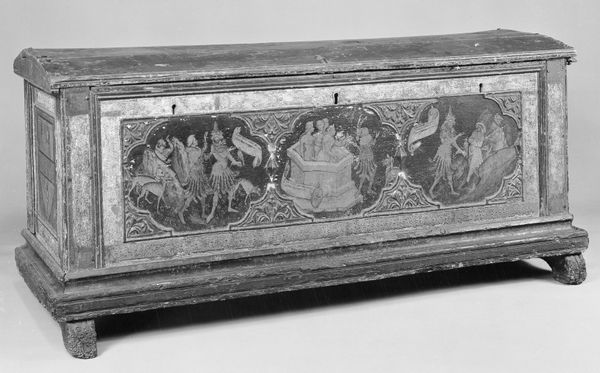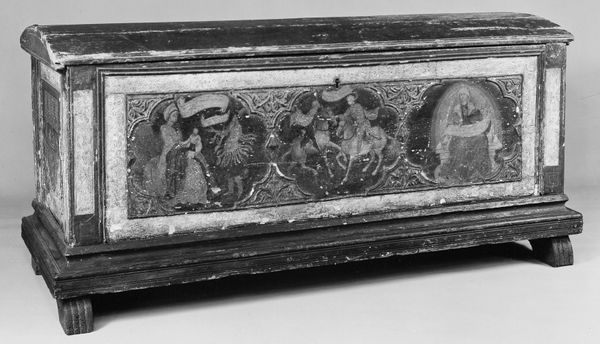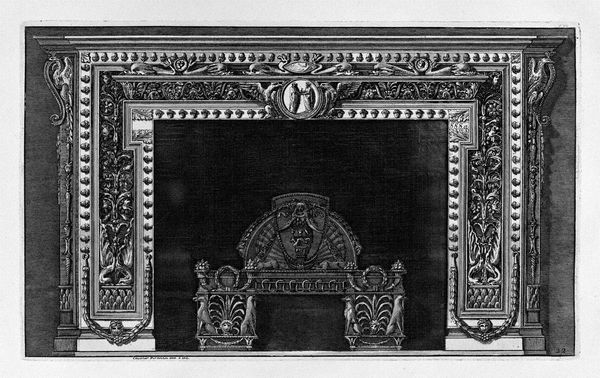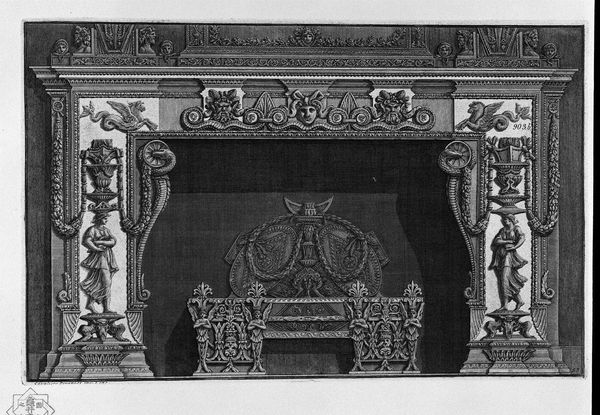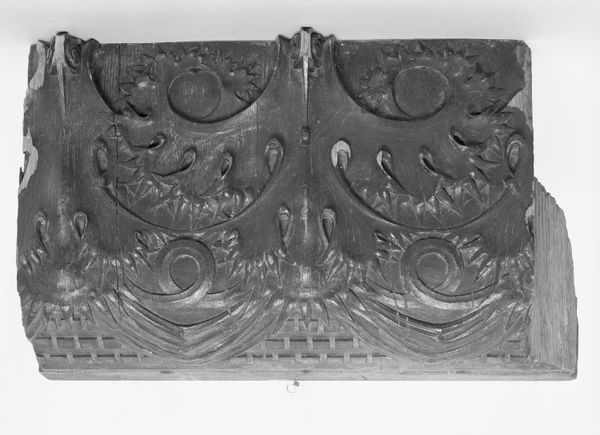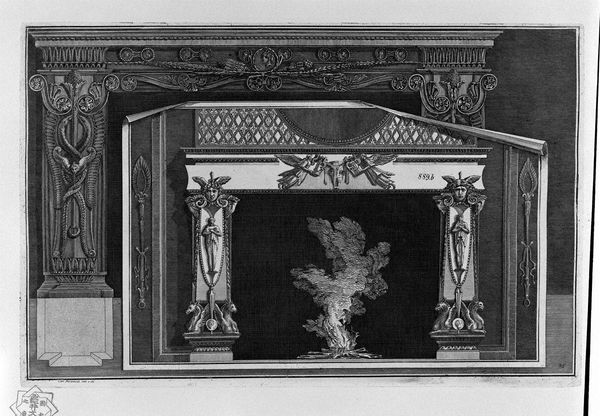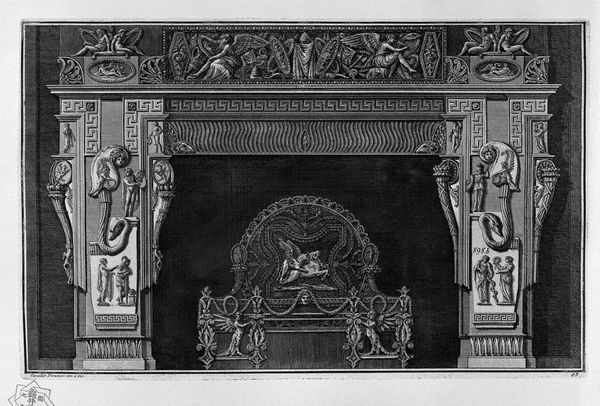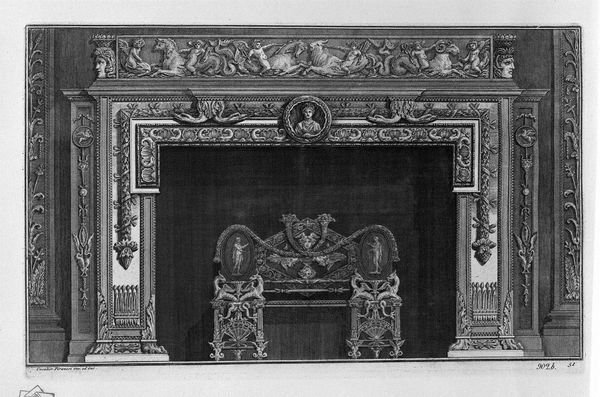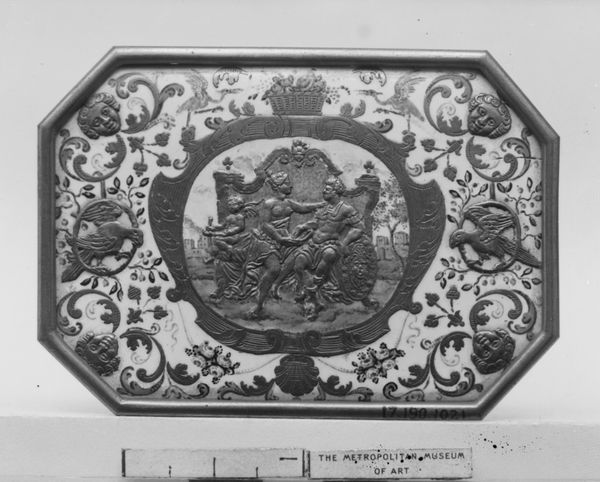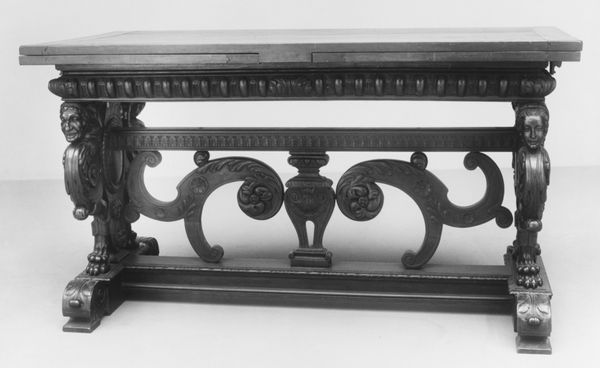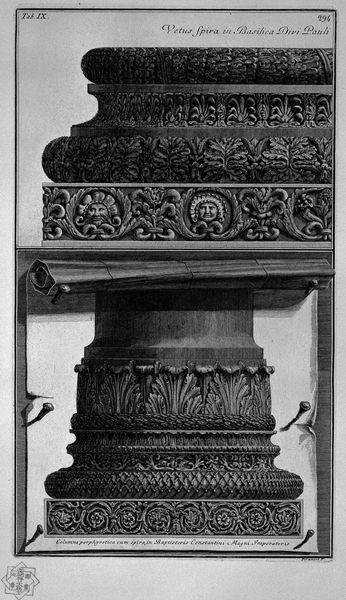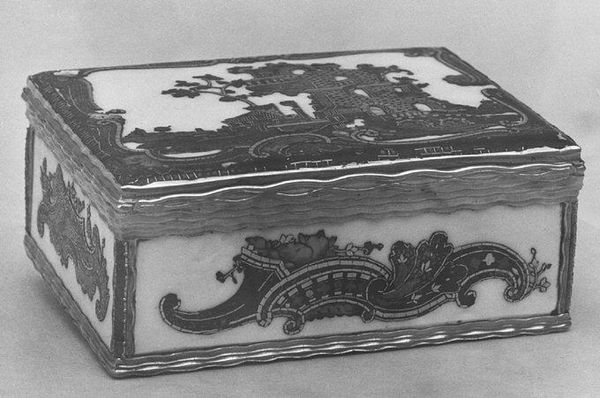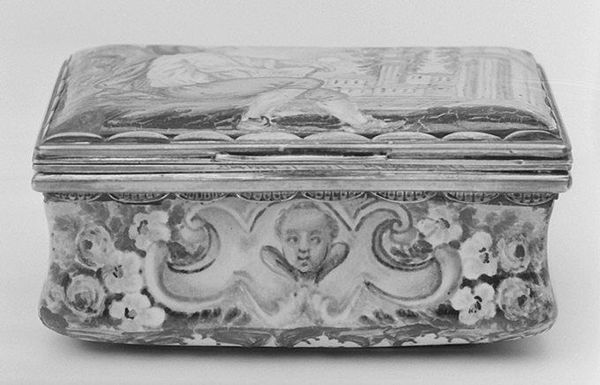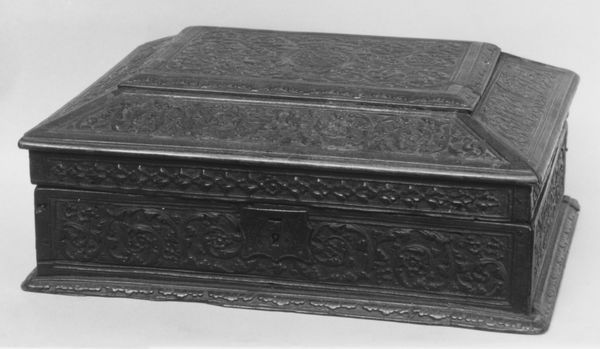
painting, wood
#
baroque
#
painting
#
sculpture
#
11_renaissance
#
wood
#
genre-painting
#
musical-instrument
#
miniature
Dimensions: Inner Instrument: Length parallel to keyboard 82.0 cm Width perpendicular to keyboard 33.7 cm Depth 121 cm 3-octave span 47.8 cm Sounding lengths (plucking points): c/e 79.6 (7.5) c2 34.5 (5.5) d4 7.6 (2.3)
Copyright: Public Domain
This is a triangular octave spinet, likely made in Italy during the 17th century by Pasquino Querci. It's decorated with painted scenes, combining images of cherubic faces and vases with a central scene of the Virgin and Child. The spinet was a popular instrument in aristocratic circles, and its visual decoration reflected the cultural values of its time. The iconography is deeply rooted in religious and mythological themes, aligning with the traditions upheld and promoted by wealthy patrons and the Church. The artwork on the instrument thus becomes a reflection of societal norms. To fully grasp the significance of such an object, historians delve into inventories, patronage records, and social histories of the time. Understanding the convergence of musical practice, visual culture, and social status allows us to appreciate the spinet not just as a musical instrument but as a mirror reflecting the values and structures of its society.
Comments
No comments
Be the first to comment and join the conversation on the ultimate creative platform.
